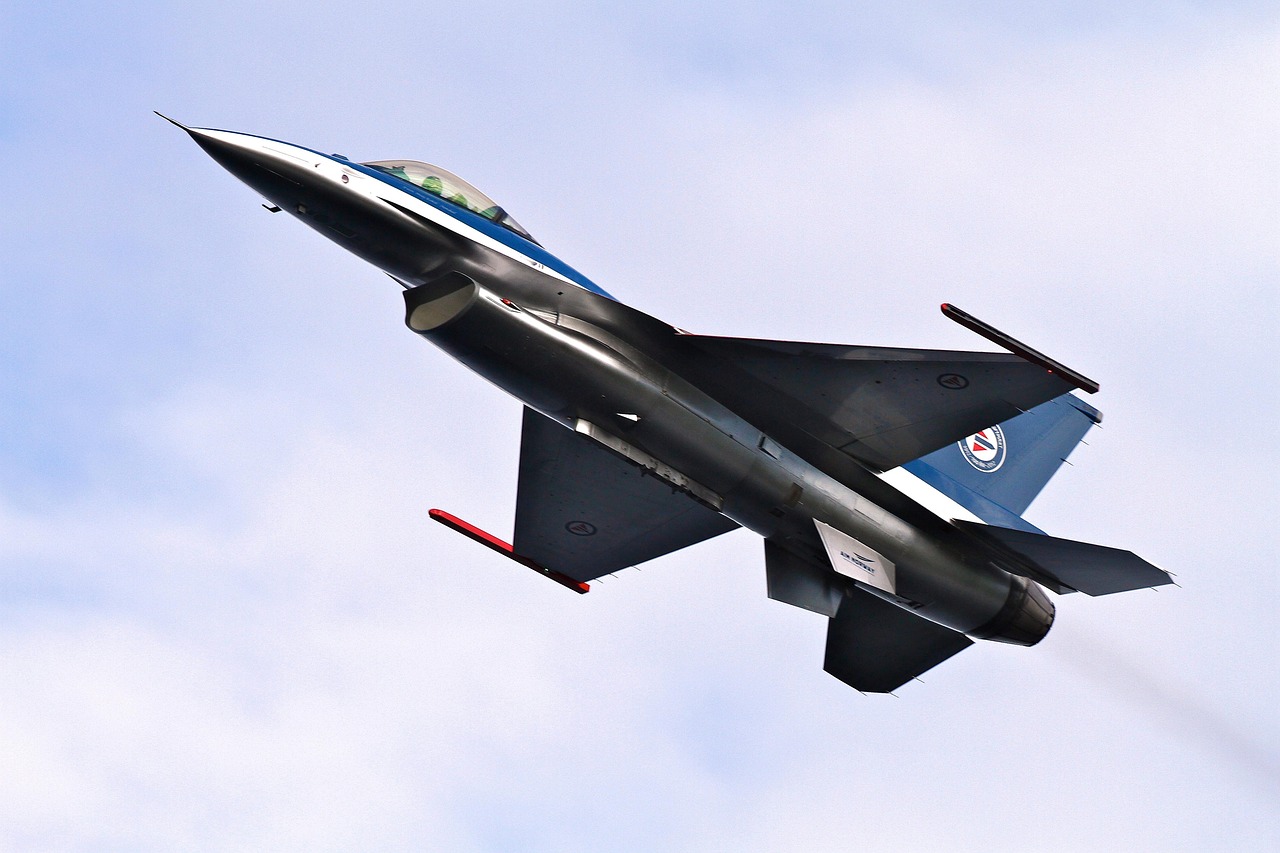Politics
Romania Scrambles F-16s to Counter Russian Drone Incursion

On the evening of March 16, 2024, Romania deployed two F-16 fighter jets to intercept a Russian drone that had breached its airspace near the Ukrainian border. The drone entered Romanian territory during a Russian assault on Ukrainian infrastructure along the Danube River. Although Romanian pilots were authorized to engage the drone, they opted not to fire in order to avoid potential collateral damage. The incident lasted approximately 50 minutes before the drone exited Romanian airspace near Chilia Veche.
This incident marks the second breach of NATO airspace within a week, following a similar occurrence in Poland, where multiple Russian drones entered the country’s territory. The repeated incursions have raised concerns among NATO officials regarding the possibility of the Ukraine conflict expanding into alliance member states. In response to the airspace violation, Romania summoned the Russian ambassador to Bucharest, formally protesting this infringement on its sovereignty.
Romanian Defence Minister Ionuț Moșteanu characterized the incident as a significant threat to regional stability, reiterating Romania’s commitment to safeguarding its airspace. Ukrainian President Volodymyr Zelensky also commented, describing the drone’s flight as an “obvious expansion” of Russia’s military activities beyond Ukraine’s borders.
The European Commission expressed its concerns as well, with President Ursula von der Leyen labeling the breach a “reckless escalation.” These diplomatic exchanges underscore the heightened tensions along NATO’s eastern flank as member states evaluate the risks posed by Russian military actions near their borders.
NATO’s Response and Increased Vigilance
In light of the recent incursions, NATO is reinforcing its eastern defenses through Operation Eastern Sentry. This initiative includes enhanced air policing and surveillance missions across member states in Eastern Europe. Countries participating in the operation include Germany, France, Denmark, and the United Kingdom, all working together to monitor airspace along NATO’s eastern borders.
In response to the latest incursion, Romania has heightened its military readiness. F-16 jets from the 86th Air Base in Borcea are now conducting routine patrols along the border with Ukraine. The Romanian Air Force is authorized to engage unauthorized drones even during peacetime, although authorities remain cautious to prevent escalation.
Security analysts note that unmanned aerial vehicles have become a common tool for Russia to test NATO’s air defenses without launching large-scale attacks. The Russian government has denied intentionally violating Romanian airspace, with Kremlin spokespersons suggesting that the drone incident could have been linked to Ukrainian actions. They also indicated that the Romanian military response could be seen as a provocation. Russian officials further claimed that NATO’s involvement in Ukraine’s defense contributes to escalating tensions in the region.
The Implications of Drone Incursions
The use of drones represents a low-risk strategy for Russia to monitor NATO borders while signaling military capability. Analysts have emphasized that repeated airspace violations necessitate increased vigilance along NATO’s eastern frontier. The Romanian drone incursion illustrates the potential for the Ukraine conflict to spill over into NATO territories.
Unmanned aerial vehicles allow Russia to test border security and response protocols without deploying significant military forces. The Romanian incident, along with the recent drone breach in Poland, highlights the critical importance of NATO’s surveillance and rapid response capabilities. Defence authorities in Eastern Europe are closely monitoring airspace to prevent further incursions and maintain regional stability, with additional military resources likely to be deployed if violations persist.
As tensions continue to rise, the situation remains dynamic, and NATO’s commitment to collective defense will be tested in the face of these ongoing challenges.
-

 Health3 months ago
Health3 months agoNeurologist Warns Excessive Use of Supplements Can Harm Brain
-

 Health3 months ago
Health3 months agoFiona Phillips’ Husband Shares Heartfelt Update on Her Alzheimer’s Journey
-

 Science1 month ago
Science1 month agoBrian Cox Addresses Claims of Alien Probe in 3I/ATLAS Discovery
-

 Science1 month ago
Science1 month agoNASA Investigates Unusual Comet 3I/ATLAS; New Findings Emerge
-

 Science4 weeks ago
Science4 weeks agoScientists Examine 3I/ATLAS: Alien Artifact or Cosmic Oddity?
-

 Science4 weeks ago
Science4 weeks agoNASA Investigates Speedy Object 3I/ATLAS, Sparking Speculation
-

 Entertainment4 months ago
Entertainment4 months agoKerry Katona Discusses Future Baby Plans and Brian McFadden’s Wedding
-

 Entertainment4 months ago
Entertainment4 months agoEmmerdale Faces Tension as Dylan and April’s Lives Hang in the Balance
-

 World3 months ago
World3 months agoCole Palmer’s Cryptic Message to Kobbie Mainoo Following Loan Talks
-

 Science4 weeks ago
Science4 weeks agoNASA Scientists Explore Origins of 3I/ATLAS, a Fast-Moving Visitor
-

 Entertainment4 months ago
Entertainment4 months agoLove Island Star Toni Laite’s Mother Expresses Disappointment Over Coupling Decision
-

 Entertainment3 months ago
Entertainment3 months agoMajor Cast Changes at Coronation Street: Exits and Returns in 2025









